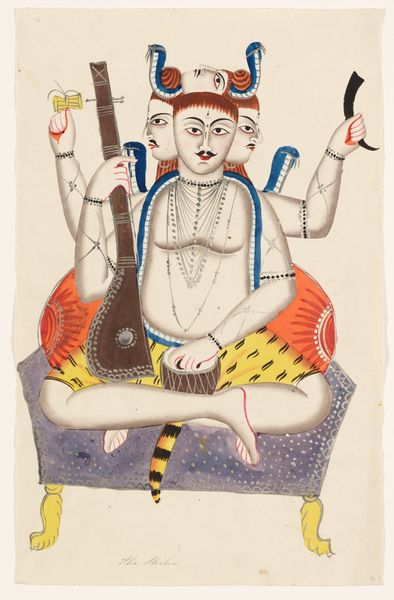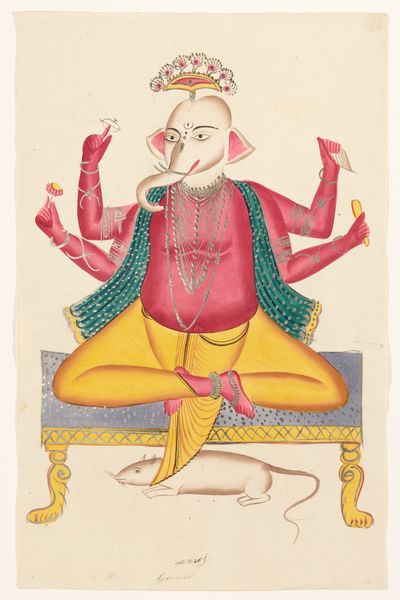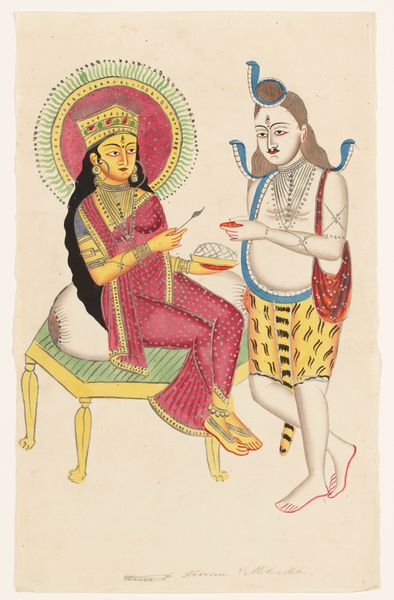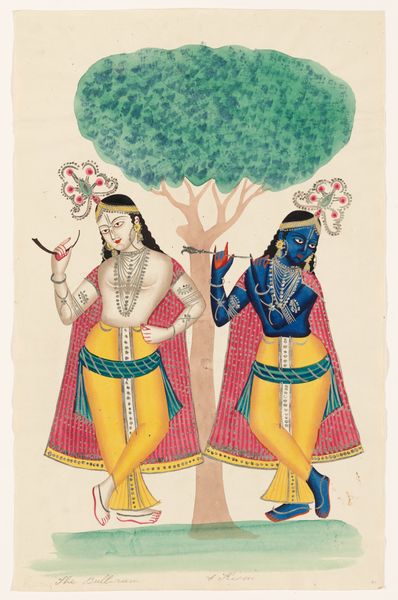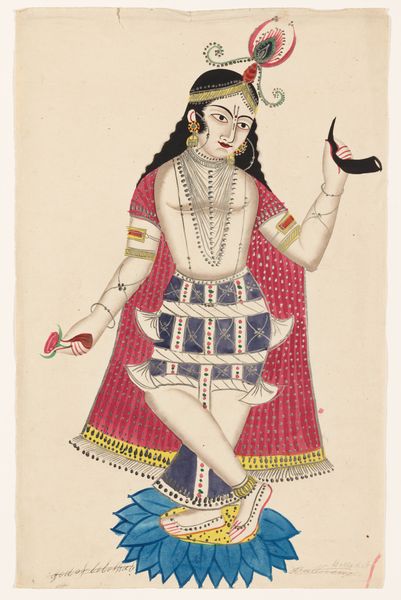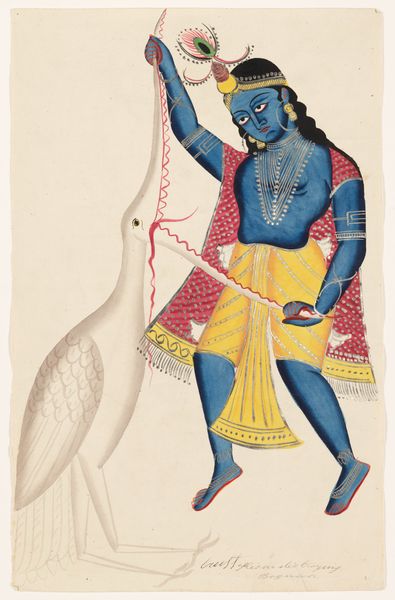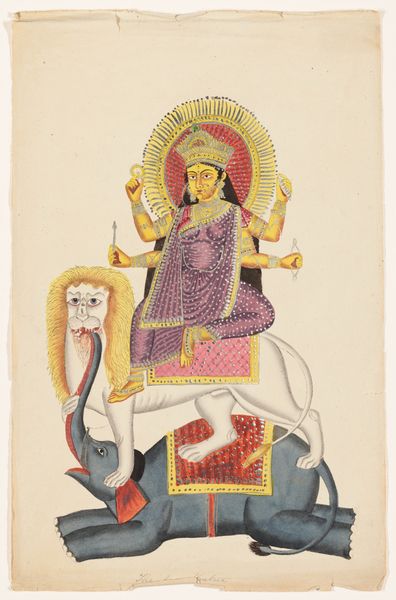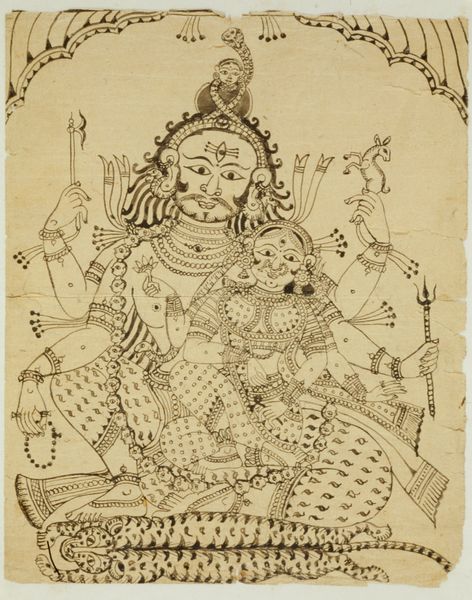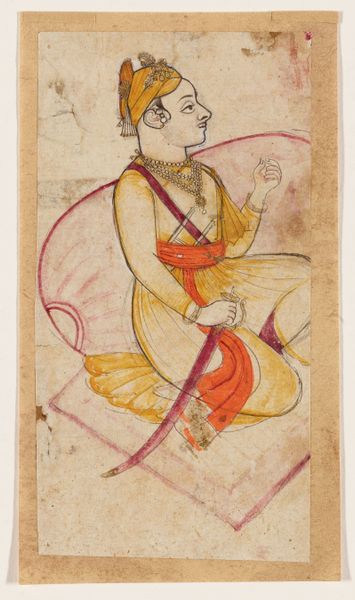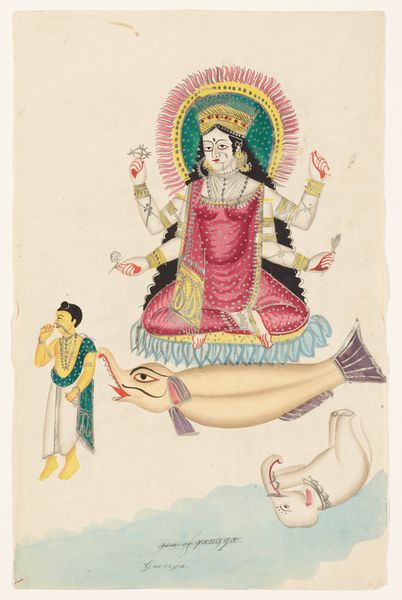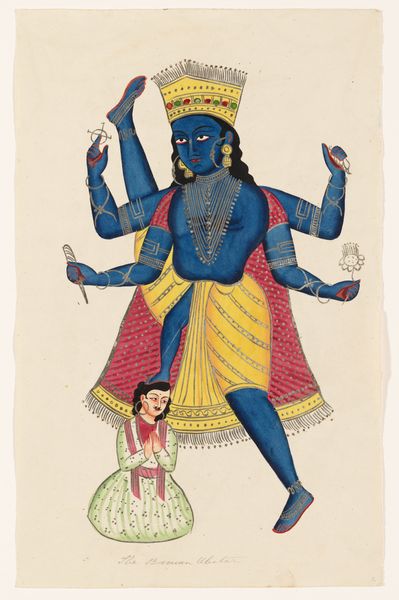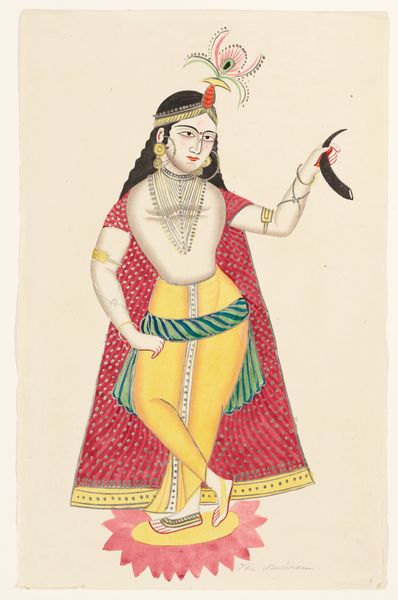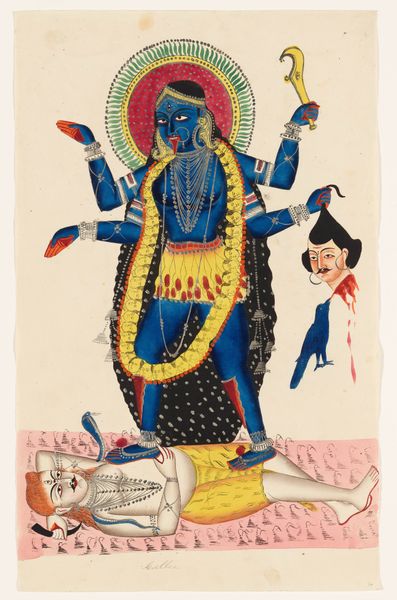
drawing, watercolor
#
portrait
#
drawing
#
asian-art
#
caricature
#
figuration
#
watercolor
#
watercolour illustration
#
miniature
Dimensions: 17 11/16 x 11 3/16 in. (44.9 x 28.4 cm)
Copyright: Public Domain
Curator: Here we have "Shiva," a watercolor drawing dating to the 19th century. Notice the artist's intricate use of line and color. What strikes you most about the visual elements at play? Editor: The flatness. Despite the intricate detail, the figure seems weightless, almost floating. And those eyes—so many, yet so vacant. It reads as an unsettling power dynamic for me, an overwhelming gaze, but what are we to make of the god presented in such simple terms? Curator: Formally, the work's simplicity is its strength. The symmetrical arrangement of the four faces—crowned by snakes—along with the multiple arms holding symbolic objects, creates a compelling visual rhythm. It's through this formal arrangement that the artist communicates the essence of Shiva. Editor: True, but consider the broader implications. By flattening Shiva, almost caricaturing him, the artist also potentially diminishes his divine complexity, catering perhaps to a Western gaze that exoticizes and simplifies non-Western deities. Is this a devotional image, or something else? Curator: Perhaps both? The meticulous detail in the jewelry and the musical instrument indicates a degree of reverence. Yet, the artist's choices also reflect particular artistic conventions within miniature painting, where clarity of form and line are paramount. Notice the delineation of color. Editor: But color can be deceptive. That bright pink cushion he's sitting on clashes intrusively. Does this undermine the visual logic? It reminds me that Indian visual traditions are often misinterpreted through Western post-colonial frames. Shiva presented here, on a platform seemingly for display, strips away the multi-layered complexity of Shiva’s creation, maintenance, and destruction of this world in continuous and generative cycles. The tension within this display is a power relation, and how cultural transmission takes place outside of South Asia. Curator: And within it! Think of this presentation in terms of semiotics and meaning within that context— the hand gestures, musical instrumentation, his crown, these markers invite close decoding. It is important to understand Shiva’s form in relation to larger narrative strategies. Editor: It all returns to power dynamics! In any event, seeing it from these angles offers fresh perspectives, even after many years in storage! Curator: Indeed, analyzing its formal elements allows us a unique lens through which we may consider meaning.
Comments
No comments
Be the first to comment and join the conversation on the ultimate creative platform.
